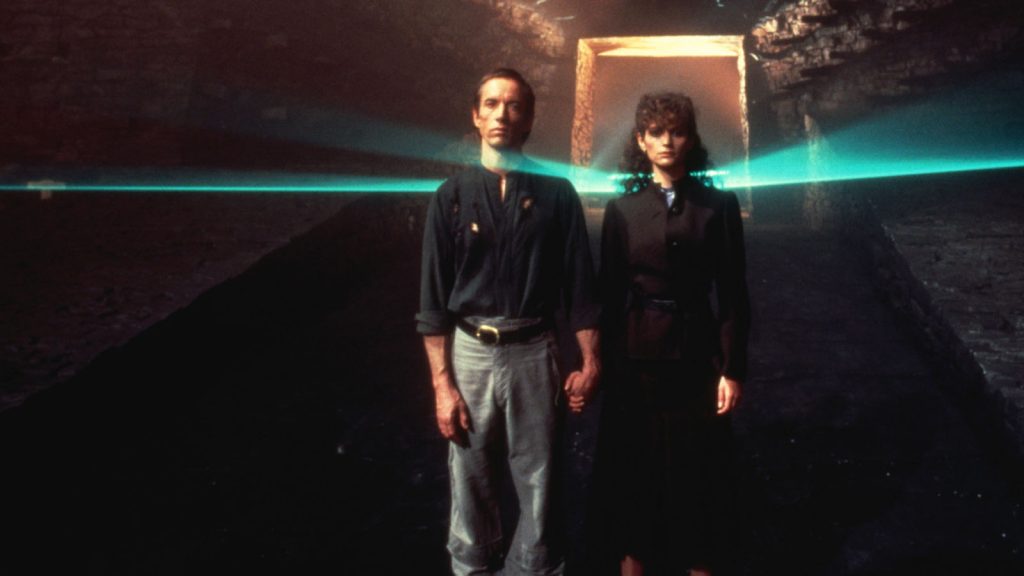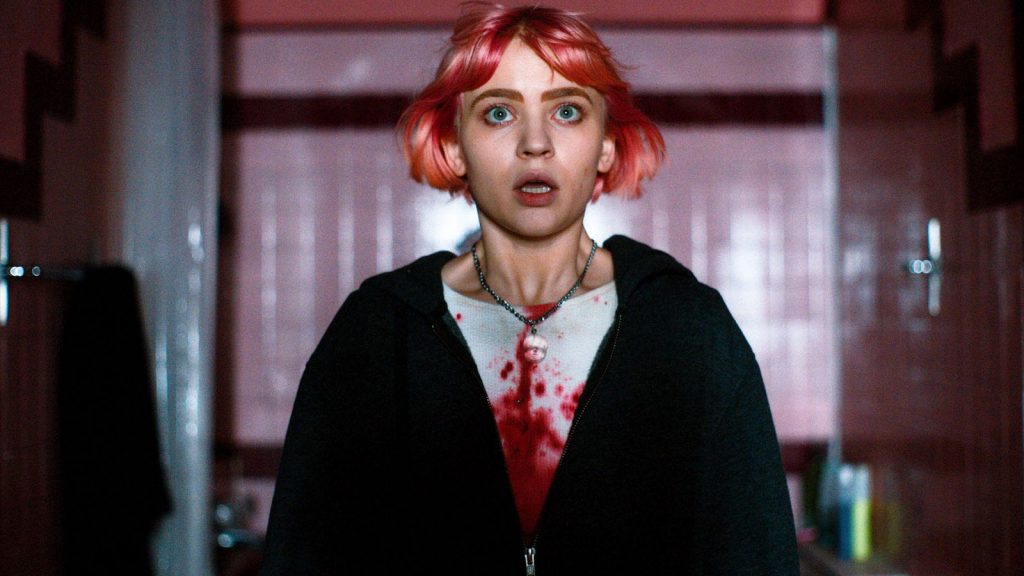
Though it’s not as widely known as some of the other B-horror films that Val Lewton produced for RKO between 1942 and 1946, The Seventh Victim is the cycle’s poetic pinnacle. Watershed works that feel like whispers, these frightening, fatalistic tales of folklore, hauntings, demonic possessions, and madness evoked profound states of feeling and being with the slightest of touches and the eeriest of inferences. While masterpieces like Cat People and I Walked with a Zombie perfectly exemplify how much you can achieve with little, using shadows and light, echoes and screams to grip and terrify viewers with intimations of the supernatural, The Seventh Victim is pit-of-the-stomach scary for being very much of this world. Pushing the darkness of Lewton’s perspective to new depths of nihilism, this is horror cinema so brilliantly fragmented that the terror almost feels subliminal; in just 71 strange and immersive minutes, we are dropped into an inexplicable, grim world. Released during the height of World War II, when most American films were positive, poignant portrayals of the home front, The Seventh Victim is something of a malignant miracle.
Marking both the screen debut of star Kim Hunter and the directorial debut of Mark Robson (who’d edited several prior Lewton productions), the film follows the too-quick and tortured coming-of-age of a young woman named Mary, who must leave the comfort of her Catholic boarding school when Jacqueline, her older sister and benefactor, goes missing. Mary tries to track her down in New York’s Greenwich Village (an odd, unconvincing yet still effective Hollywood backlot), meeting neighbors, friends, and acquaintances who last saw her before she disappeared. The only ominous trace of the former cosmetics factory owner’s recent activity is a hanging noose and a chair propped below it in the tiny apartment she rented above an Italian restaurant. Jacqueline is nowhere to be seen, but Mary soon discovers something evil: her sister had fallen in with a group called the Palladists, a sinister cult that proudly worships Satan. (There’s even a pronounced queer subtext to the cult’s shady dealings, intimating the kinds of sinister lesbian undertones that were common in ’40s Gothic films like Rebecca and The Uninvited.) When Jacqueline finally resurfaces, the film only gets more deeply disturbing, revealing the extent to which she’s been manipulated by this grim cabal, and how they’ve taken advantage of her anxiety and essential death drive.
Boldly, The Seventh Victim is at its core a film about depression, underscoring the scary reality that for many people in this world, death is not just a matter of course, but the only truth there is. Lewton’s perfect horror-suspense set pieces are all here, and mounted as brilliantly as always—a subway ride with a man who might be a corpse; a scene in which Mary is intimidated in the shower by a looming silhouette (17 years before Psycho); the extended, climactic stalking of a woman through the city streets—though here they have an added emotional and philosophical heft: these are the gathering shadows of death itself, looming up from humanity’s well of loneliness. And, finally, Lewton and Robson give their film a grace note of utter despair, achieved with just a single off-screen sound. Lewton knew that obliqueness itself could be effective, but this is downright diabolical. 🩸

is Editorial Director at Museum of the Moving Image; cofounder and editor of the online film magazine Reverse Shot, a publication of MoMI; a longtime contributor to The Criterion Collection, where he programs the Criterion Channel series “Queersighted”; and the author of Films of Endearment (Hanover Square Press, 2021).
At this crazy moment, when film history is caught in the grip of multiple clichés that grind on and on and on—puerile revenge + empowerment fantasies...
BY KENT JONES | September 10, 2023
A nurse leads a catatonic through an expanse of moonlit cane. They pass displays of sacrificed animals before encountering the towering, shirtless, dead-eyed Black man who grants them entry to a private outdoor religious ceremony...
BY JOSÉ TEODORO | March 17, 2023
A lipstick and makeup mirror slip from fear-frozen hands, a sack spills corn flour along a grassy trail, a ball floats atop a geyser of water, the rattlesnake whir of castanets, blood seeps in from below a heavy door...
BY JOSÉ TEODORO | October 29, 2025

This pre-Code offering packs a lot of story into its typically brisk running time, with several plot threads weaving together a (not always successful) tapestry of spooky and criminal doings.
READ MORE >
BY ANN OLSSON | Month 00, 2021

In what could be the fastest-resulting rape revenge movie, a drunken lout brutally forces himself on Ida, the young woman who doesn't return his affections, during a party over Labor Day.
READ MORE >
BY LAURA KERN | Month 00, 2021

Beast is a lot of movies in one package - fractured fairy tale, belated-coming-of-age story, psychological drama, regional horror film - but above all it's a calling card for its leading lady, Jessie Buckley.
READ MORE >
BY LAURA KERN | Month 00, 2021